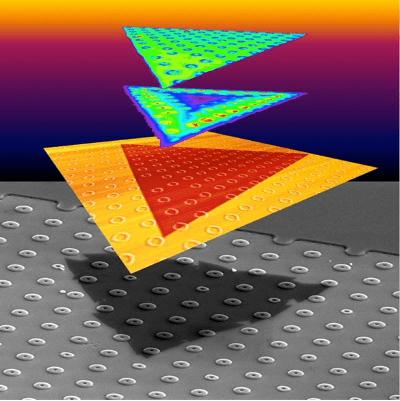Simulations could help molecular engineers enhance creation of semiconducting nanomaterials
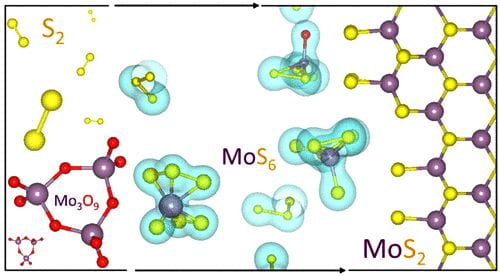 Scientific studies describing the most basic processes often have the greatest impact in the long run. A new work by Rice University engineers could be one such, and it’s a gas, gas, gas for nanomaterials.
Scientific studies describing the most basic processes often have the greatest impact in the long run. A new work by Rice University engineers could be one such, and it’s a gas, gas, gas for nanomaterials.
Rice materials theorist Boris Yakobson, graduate student Jincheng Lei and alumnus Yu Xie of Rice’s Brown School of Engineering have unveiled how a popular 2D material, molybdenum disulfide (MoS2), flashes into existence during chemical vapor deposition (CVD).
Knowing how the process works will give scientists and engineers a way to optimize the bulk manufacture of MoS2 and other valuable materials classed as transition metal dichalcogenides (TMDs), semiconducting crystals that are good bets to find a home in next-generation electronics.
Their study in the American Chemical Society journal ACS Nano focuses on MoS2‘s “pre-history”, specifically what happens in a CVD furnace once all the solid ingredients are in place. CVD, often associated with graphene and carbon nanotubes, has been exploited to make a variety of 2D materials by providing solid precursors and catalysts that sublimate into gas and react. The chemistry dictates which molecules fall out of the gas and settle on a substrate, like copper or silicone, and assemble into a 2D crystal.
– See more at Rice News


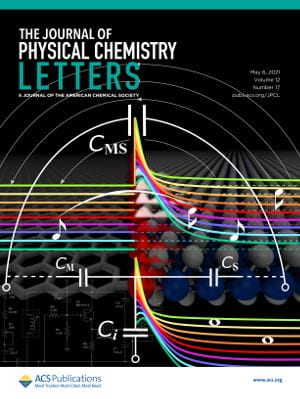 Electronic transport through a
Electronic transport through a  Predictive modeling of 2D materials is at the crossroad of two current rapidly growing interests: 2D materials per se, massively sought after and explored in experimental laboratories, and materials theoretical-computational models in general, flourishing on a fertile mix of condensed-matter physics and chemistry with advancing computational technology. In the April issue of
Predictive modeling of 2D materials is at the crossroad of two current rapidly growing interests: 2D materials per se, massively sought after and explored in experimental laboratories, and materials theoretical-computational models in general, flourishing on a fertile mix of condensed-matter physics and chemistry with advancing computational technology. In the April issue of 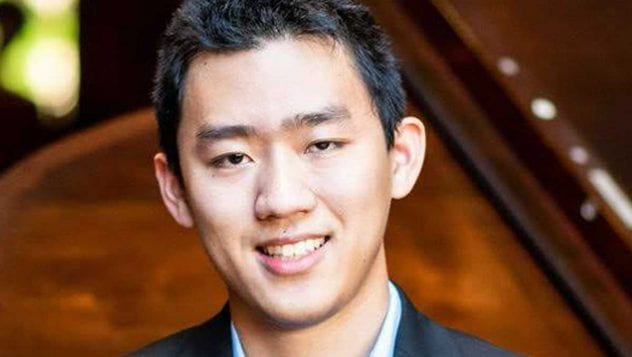 Nicholas Tjahjono, a first-year doctoral student in Yakobson Research Group, has been awarded the
Nicholas Tjahjono, a first-year doctoral student in Yakobson Research Group, has been awarded the 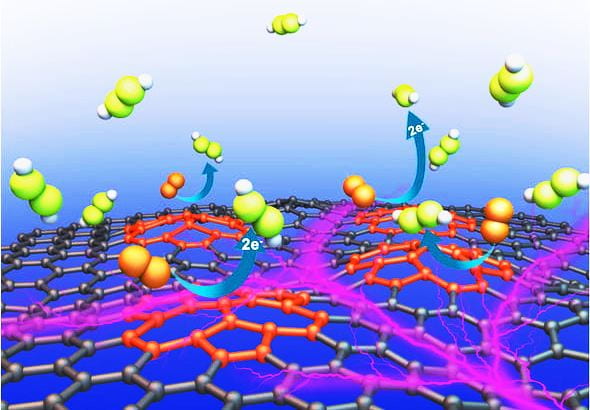 Rice University researchers have created a “defective” catalyst that simplifies the generation of
Rice University researchers have created a “defective” catalyst that simplifies the generation of 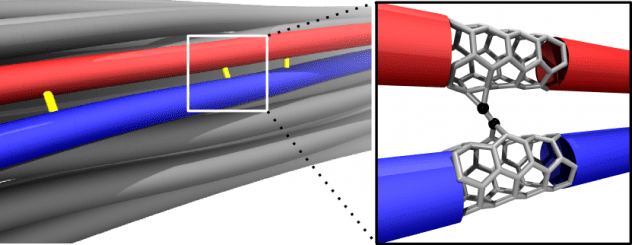 Carbon nanotube fibers are not nearly as strong as the nanotubes they contain, but Rice University researchers are working to close the gap.
Carbon nanotube fibers are not nearly as strong as the nanotubes they contain, but Rice University researchers are working to close the gap.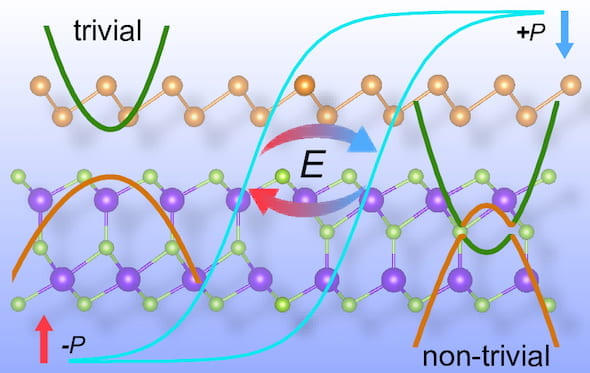
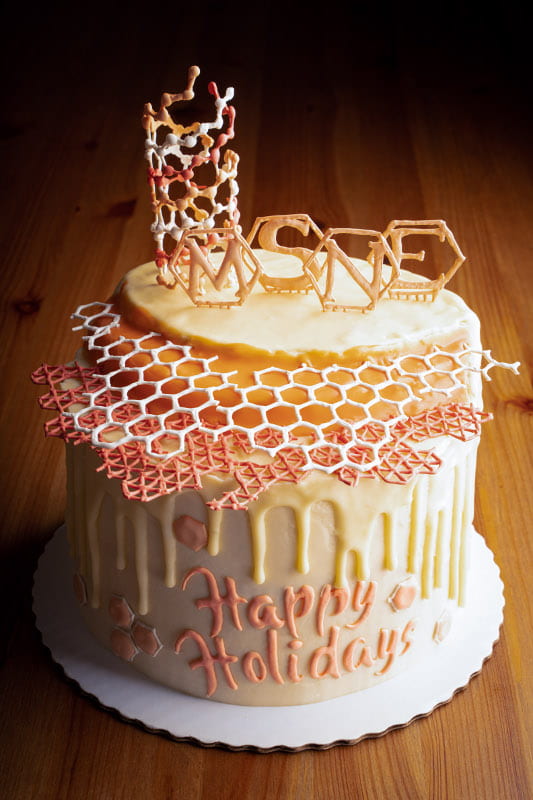
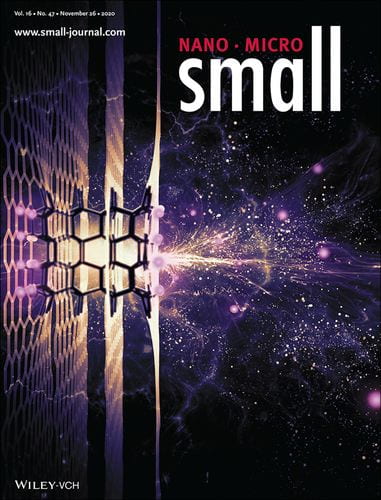
 Sunny Gupta, a fourth-year graduate student in Yakobson’s Group, has received a “Best Oral Presentation” Award at the
Sunny Gupta, a fourth-year graduate student in Yakobson’s Group, has received a “Best Oral Presentation” Award at the 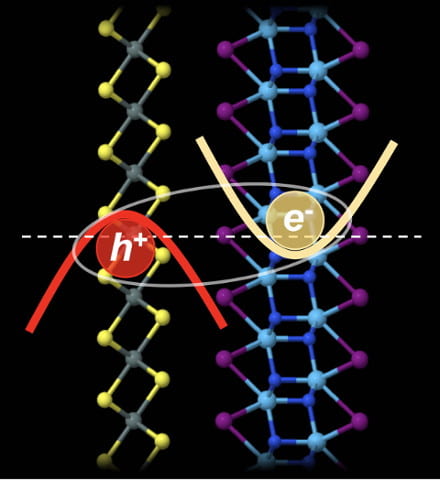 Mixing and matching computational models of 2D materials led scientists at Rice University to the realization that
Mixing and matching computational models of 2D materials led scientists at Rice University to the realization that 
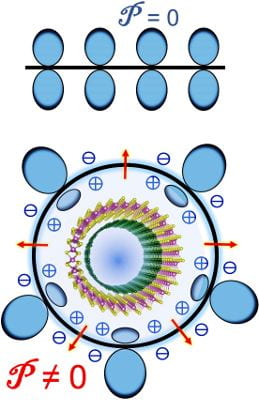 One nanotube could be great for electronics applications, but there’s new evidence that two could be tops.
One nanotube could be great for electronics applications, but there’s new evidence that two could be tops.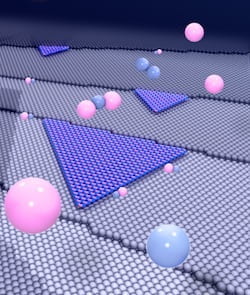 Step by step, scientists are figuring out new ways to extend
Step by step, scientists are figuring out new ways to extend 